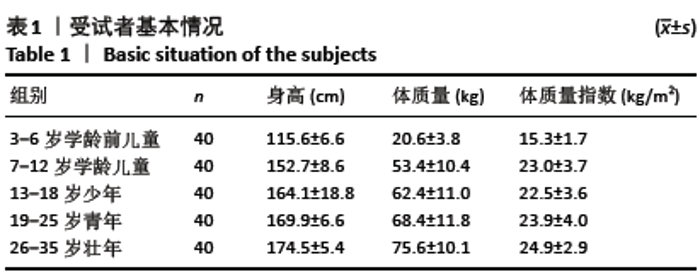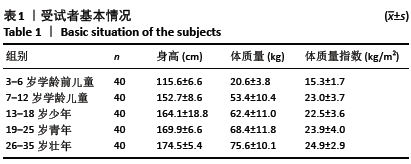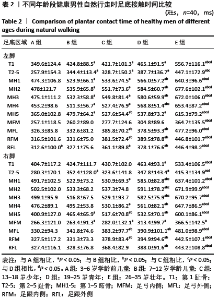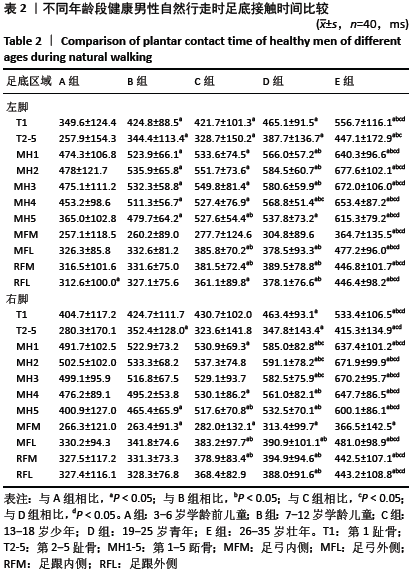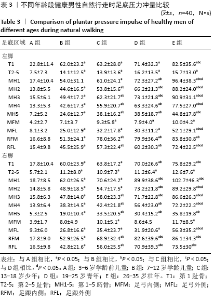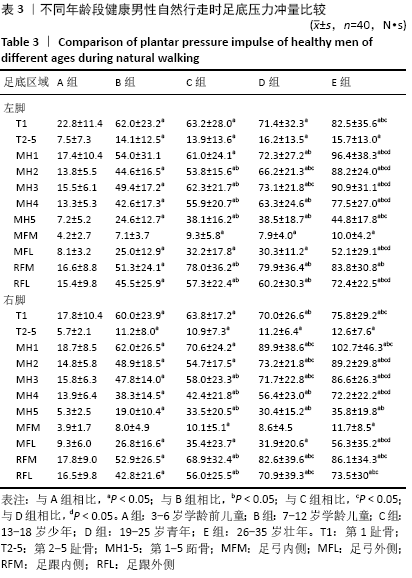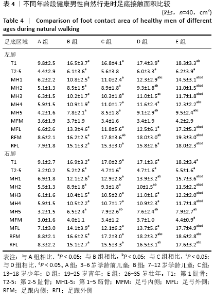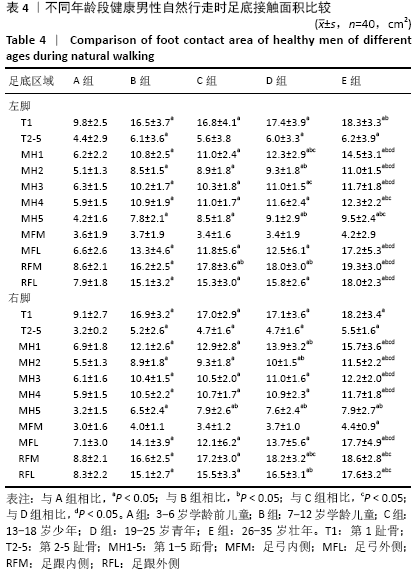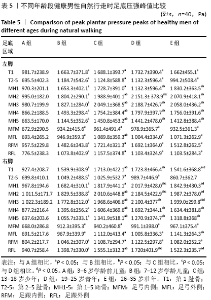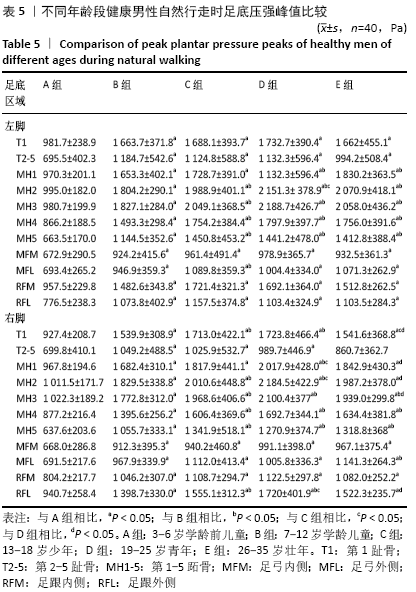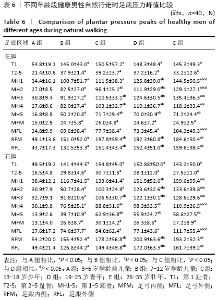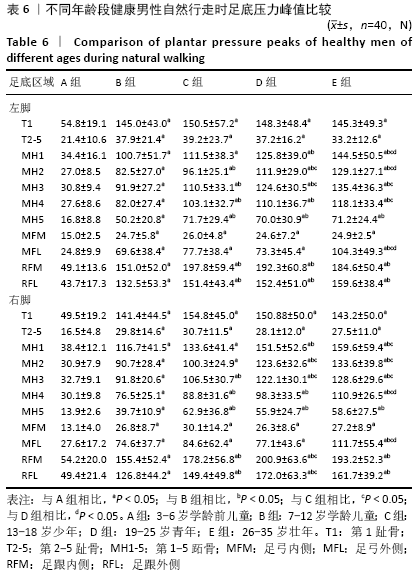[1] 吴立娟. 我国4-11岁儿童足型参数测量和动态足底压力分析[D]. 北京:北京体育大学, 2011.
[2] 王俊,杨振辉,刘海兵,等.下肢康复机器人在脑卒中患者步行障碍中的应用和研究进展[J].中国康复医学杂志,2014,29(8):784-788.
[3] DE COCK A, WILLEMS T, WITVROUW E, et al. A functional foot type clasification with cluster analysis based on plantar pressure distribution during jogging. Gait Posture. 2006;23(3):339-347.
[4] FORNER CORDERO A, KOOPMAN HJ, VAN DER HELM FC, et al. Use of pressure insoles to calculate the complete ground reaction forces. J Biomech. 2004;37(9): 1427-1432.
[5] 刘丽新,孟欢欢,王迎霞,等. 凝视手机对青年女性行走时足底压力及下肢表面肌电的影响[J].中国运动医学杂志,2019,38(8):669-676.
[6] 朱瑶佳,霍洪峰.走与跑运动模式下的足底压力中心轨迹特征[J].中国组织工程研究,2018,22(31):4987-4992.
[7] HALLEMANS A, D’AOUT K, DE ClLERCQ D, et al. Pressure distribution patterns under the feet of new walkers: the first two months of independent walking. Foot Ankle Int. 2003;24(5):444.
[8] WILLEMS T, WITVROUW E, DELBAERE K, et al. Relationship between gait biomechanics and inversion sprains: a prospective study of risk factors. Gait Posture. 2005;21(4):379-387.
[9] BOSCH K, OSENBAUM D. Gait symmetry improves in childhood—A 4-year follow-up of foot loading data. Gait Posture. 2010;32(4):464-468.
[10] HALLEMANS A, AOOUT DK, CLERCQ DD, et al. Pressure distribution patterns under the feet of new walkers:the first two months of independent walking. Foot Ankle. 2003;24(5):444-453
[11] PHETHEAN J, PATAKY TC, NESTER CJ, et al. Across-sectional study of age-related changes in plantar pressure distribution between 4 and 7 years:A comparison of regional and pixel-level analyses. Gait Posture. 2014;39(1):154-160.
[12] BERTSCH C, UNGER H, WINKELMANN W, et al. Evaluation of early walking patterns from plantar pressure distribution measurements.First year results of 42 children. Gait Posture. 2004;19(3):235-242.
[13] 张悠然, 李霞, 徐波, 等.四川地区3-11岁儿童足底压力分布的调查和研究[J]. 中国皮革,2013,42(24):110-113.
[14] 隋心怡. 7-15岁青少年下肢形态及足底压力分布特征研究[D]. 广州:广州体育学院,2018.
[15] 马新颖,满喜.不同年龄段人群行走足底压力特征分析[J].医用生物力学, 2020,35(1):108-113.
[16] 宋雅伟,蔡奕玺,寇恒静,等.鞋底硬度与人体行走中足底压力的变化[J].中国组织工程研究与临床康复, 2009,13(46):9113-9116.
[17] 马越,王子丹.足底压力分布年龄差异分析[J].中国人民公安大学学报, 2010(2):5-7.
[18] ELEFTHERIOS K. Plantar pressure distribution during barefoot standing , walking and landing in preschool boys. Gait Posture. 2001;14:92-97.
[19] 王永慧,严励,杨川,等.不同年龄健康人足底压力参数的比较[J].中华老年医学杂志,2005,24(10):761-762
[20] 李立,陈玉娟,贾富池,等.正常足非肥胖学龄儿童足底压力分布特征测试与分析[J]. 石家庄学院学报,2020,22(3):125-129.
[21] 李永强. 60~69岁妇女自然行走时的足底压力特征[J].中国组织工程研究与临床康复,2009, 13(41):8044-8047
[22] 李立,陈玉娟,翟凤鸣,等.长期从事太极拳运动老年人足底压力分布特征及平衡能力研究[J].中国康复医学杂志,2016,31(9):984-988.
[23] 李冬玲,李远,李姗姗.平衡足底压力及稳定步态在早期糖尿病足防治[J].临床医学工程,2016,23 (2):173-174.
[24] 吴宝平,闰松华,张宽,等.大学生不同运动方式下的足底压力分布研究[J].北京生物医学工程,2016,35 (2):161-179.
[25] 张庆来,宋绍兴,董杰. 健康大学生足底压力分布参数特征[J].中国学校卫生, 2007,28(9):814-816.
[26] 宋吉锐,马越,王新,等. 沈阳市2~6岁健康儿童足发育状况及步行足底压力特征研究[J]. 沈阳体育学院学报,2016,35(6):76-80.
[27] 霍洪峰,吴艳霞,高峰.男性老年人健步走足底压力分布与步态特征[J].中国康复医学杂志,2009,24(12):1119-1121.
[28] 谭铁君,白丽莉,马越,等.关于足底跖区压力分布与年龄相关性的研究[J].辽宁警专学报,2009(1):66-70.
[29] SCHARER BM, DE VRIES JG. Comparison of chevron and distal oblique osteotomy for bunion correction. J Foot Ankle Surg. 2016;55(4):738-742.
[30] WIT BD, CLEREQ DD, AERTS P. Biomechanical analysis of the stance phase barefoot and shod running. J Biomech. 2000;33:269.
[31] 吴刚.长期体育锻炼对老年人足底压力分布特征的影响[D]. 南京:南京师范大学,2014.
[32] 左建刚,胡海威,桑志成,等. 拇外翻足并发第2跖骨头下疼痛的相关因素研究[J].中国骨伤,2017,30(1):51-56.
[33] 李雪婷,刘卉,蒋琪,等.北京海淀区6~15岁儿童体成分对足底压力的影响[J].中国学校卫生,2017,38(5):712-716.
[34] 闫红光.不同体质量指数成年女性穿高跟鞋行走步态特征分析[J].中国组织工程研究,2016,20(49):7349-7355.
[35] 金宗学,何辉,阮槟,等.凝视手机对青年男性静态平衡、足底压力步态及下肢关节的影响[J].中国组织工程研究,2017,21(28):4454-4461.
[36] BERTSCH C, UNGER H, WINKELMANN W, et al. Evaluation ofearly walking patterns from plantar pressure distribution measurements. Gait Posture. 2004;19(3):235-242.
[37] 王疆娜,杨敬暖,周亭,等.有跌倒经历老年人静态及动态平衡能力特征研究[J].湖北体育科技,2019,38(5):423-426.
[38] 张道苗,王燕珍,李佩瑶.鞋垫类型对儿童足底压力的影响[J].上海工程技术大学学报,2017,31(2):183-188.
|
